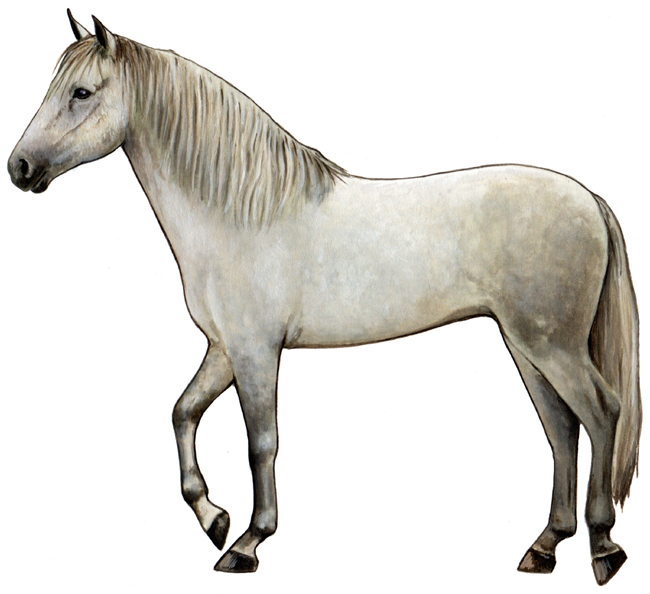|
|
| Andalusian Horse |
|
 |
The Iberian Horse is the most ancient
riding horse known to man. The Spanish and Portuguese horse
originates from the Iberian Peninsula. The Andalusians (Spanish) and
the Lusitano (Portuguese) are different branches of the same breed.
The University of Kentucky blood testing proves that there is no
difference in genetic markers or variability.
The Andalusian horse or Spanish horse is one of the
purest breeds of horses in the world today. It is also known as PRE
(Pura Raza Espaņola, en. Pure
Spanish race) in most countries because of the work done by the
Spanish studbook in promoting the pure bred horses around the world.
It is one of the two sub-breeds of the Iberian horses, and extremely
similar to the closely related Lusitano breed.
Andalusians have been used for all manner of riding horses, and
were the preferred mount of kings over many centuries. They excel in
high school dressage and are used in cattle work and bullfighting in
their native Spain. They are highly intelligent and learn very
quickly. Part bred Andalusians are popular as sport horses in
many countries. They also excel at classical dressage and are used
for show jumping and other equestrian activities.
Archaeological evidence in the Iberian Peninsula, modern day
Spain and Portugal, indicates that the origins of the Iberian Horse
date back to at least 25,000 B.C. in the form of its primitive
ancestor, the Sorraia. Cave paintings in the Iberian Peninsula dated
from around 20,000 BC depict portraits of horses and activities
related to a horse culture.
Later, the use of heavy plate armor required stronger breeds.
In the 15th century, the invention of firearms called for a lighter,
and more agile cavalry horse, and the Andalusian's popularity rose
again. During the Renaissance,
the great Classical Riding Academies took an interest in the breed.
Because of the Andalusian's agility and natural balance, it excelled
in the High School Dressage performed in many courts of the day. The
Andalusian went on to develop many other breeds suitable for High
School Dressage, including the Lipizzan, Alter Real, Lusitano,
Kladruber, and many European warm bloods of today.
During the 19th century, the use of
the Andalusian declined. However, Carthusian monks continued to
breed the horse, and preserved the purity. Today, the Spanish
government promotes the Andalusian, and the breed is gaining in
popularity for High School Dressage demonstrations. They are also
popular for bullfighting, and have recently been used for dressage,
show jumping, driving and endurance, although Thoroughbred blood
is often added to give the breed more scope. |
Image copyright Feenixx Publishing.
All right reserved. May not be used without prior written consent. |
|